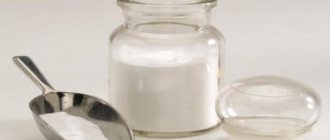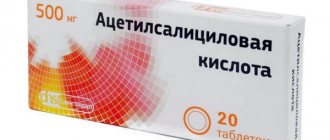Calluses, corns, cracked heels, dry skin and excessive sweating of the feet are common problems that cause a lot of inconvenience. They not only cause pain and discomfort when walking, but also give the legs an unaesthetic appearance. And if treatment is not promptly addressed, the problem will worsen and cause complications.
There are many medicinal and non-traditional ways to combat cracked heels and hyperhidrosis of the legs. One of the most accessible and effective methods is a foot bath with hydrogen peroxide. When used correctly, such a common remedy as peroxide will renew the skin on the feet, making the legs smooth, soft and healthy.
When is it used?
Attention. Hydrogen peroxide is an affordable product that is sold in any pharmacy; it can be purchased at a low price and without a prescription.
The liquid reacts with skin cells, removes bacteria and harmful microflora. The solution is used:
- for treating small cuts, wounds, burns;
- to stop minor bleeding, such as nasal, superficial;
- for stomatitis, sore throat for rinsing the mouth and throat;
- for disinfection for gynecological diseases.
Peroxide is used in cosmetic procedures, including foot care. The solution heals cracks and wounds, calluses, softens rough skin, fungus, and removes unpleasant odors.
Medicinal properties
Hydrogen peroxide is a unique pharmacological agent that is actively used in various branches of medicine.
This colorless liquid has been used for a long time to combat various dermatological diseases, including seals, calluses and rough skin.
Solutions and mixtures with the addition of this antiseptic have the following properties:
- destroy pathogenic microorganisms located in the surface layers of the skin;
- soften rough tissues;
- stimulate blood circulation, which accelerates the process of regeneration and healing of small wounds and cracks;
- fight unpleasant odors;
- prevent the development of the inflammatory process.
3% hydrogen peroxide is sold in every pharmacy and is affordable. With regular use, the product will help you quickly and painlessly remove corns at home.
But it is worth considering that a positive effect will appear if the roughening of the skin is associated with a lack of proper care, wearing low-quality shoes made of synthetic material or increased stress on the feet.
If the pathological process is caused by vitamin deficiency, an infectious or inflammatory disease, then more powerful treatment will be required.
That is why, before removing corns with hydrogen peroxide, it is recommended to consult a doctor who will help identify the original source of the pathology.
Liquid properties
H2O2 is a colorless, odorless and tasteless liquid; it is essentially water with a high concentration of oxygen. Healing properties of the solution:
- takes part in metabolism;
- has antioxidant characteristics, destroys pathogens;
- normalizes the level of acid-base balance;
- non-toxic, does not accumulate in the body with prolonged use;
- dilates blood vessels;
- accelerates tissue regeneration.
Three percent hydrogen peroxide can be used to store contact lenses if a special solution is not available. But before using the lenses for their intended purpose, they need to be rinsed to avoid burning the cornea of the eye.
How to properly make baths at home?
To achieve visible results after the first procedure, it is important to know some of the nuances of healing your legs. Recommendations for preparing and taking baths:
- First, you need to thoroughly wash your feet with soap and water to remove all dirt.
- Do not use very hot water. To keep it warm longer, cover the bowl with a towel.
- If the skin of the feet is very rough, then the procedure should last about 20 minutes, if the heels are not very rough, then 10–15 minutes is enough.
- Use a 3% solution to treat your feet.
- The best time for procedures is in the evening, before bed.
- After the bath, treat rough areas of your feet with pumice stone and apply a moisturizer.
- The duration of the course mainly depends on the initial condition of the feet. If the skin is not very rough, 1-2 baths are enough. If the layer of hardened dermis is significant, then the course may consist of 10 or more procedures.
Attention! Systematic use of a bath with hydrogen peroxide for one month not only softens the skin, but also reduces sweating of the feet.
What are they and how to do them correctly?
There are several rules for taking water procedures when fighting corns:
- do not use aggressive components if there are open wounds on your legs;
- The water should be hot , but in moderation. Adjust the temperature until it is tolerable;
- when the water has cooled, dilute it with a hot solution with the necessary components. Cold liquid is ineffective;
- After the procedure, use pumice . It will be very easy to remove rough deposits;
- It is advisable to use creams after steaming . This will increase the effectiveness of the session. If you have a dry skin type or old corns, you need to make night masks and compresses, and also use fatty creams.
Of course, you can carry out procedures only with a basin and plain water. But by adding a few active ingredients , you can get an effective solution that will solve the problem faster.
A soap bath and a compress with onions are a dual-action remedy. Soap softens the skin, and onion removes rough surfaces. Using a fine grater, make a handful of laundry soap shavings. Steam your feet for twenty minutes . Make onion pulp in any convenient way.
Place it on the callus that has softened after the bath, wrap it in plastic and bandage it.
The compress should be on the foot for fifteen minutes .
You can carry out a similar procedure, only take potatoes instead of onions .
It is very suitable for those with sensitive skin.
The process of creating and taking a bath is identical to the previous one. The compress should be made like this : grate the potatoes on a fine grater, add a couple of drops of vegetable oil to it, bandage the mixture and put socks over the bandage. This compress can be left on for half an hour .
Soap plus soda is an intensely cleansing and softening combination. Add five tablespoons of laundry soap shavings and the same amount of baking soda to two liters of water. Keep your feet in the bath for twelve minutes .
Foot baths for corns with sea salt are famous for their anti-inflammatory and mild effects. If you don’t have seafood at home, arm yourself with kitchen salt. Mix one and a half liters of water with a glass of the main ingredient and pour in five drops of lemon oil. The bath exposure time is twelve minutes .
A serum bath is what Cleopatra herself used on her skin. The technology is devoid of tricks - heat one liter of whey, add a handful of sea salt to it and steam the calluses for twenty-five minutes .
A starch bath is suitable even for those who have wounds on their feet. Add five large spoons of starch to a liter of water. Take a bath for fourteen minutes .
Attention ! Corns are signs of diabetes. Therefore, you should learn how to treat dry callus in diabetes.
Precautionary measures
Since hydrogen peroxide has a fairly strong effect on the skin, you should not take baths for more than 20 minutes. Two treatments a week are enough to avoid drying out the skin and get a positive effect.
If there are serious wounds or significant cracks on the legs, peroxide baths are contraindicated.
When preparing the solution, use only low concentrations of peroxide, as high percentage perhydrol can cause skin burns. Under no circumstances should the drug come into contact with the mucous membranes of the eyes.
Strictly observe the proportions when preparing the solution for baths, as well as the time of the procedure. If the skin on the feet is not very rough, then prolonged exposure to peroxide can be harmful.
Do not treat calluses or cracks with similar baths in young children: delicate skin may suffer from the influence of the solution.
Does peroxide help remove cracks and calluses?
Hydrogen peroxide has long been used in home cosmetology as an antiseptic and a hair color-burning agent, as well as in the form of a preparation for caring for the skin of the feet. This drug has a number of properties, thanks to which the active substance allows you not only to quickly treat cracked heels, but also to get rid of nail and foot fungus.
The peculiarity of the action of a particular heel care product is that peroxide significantly softens the rough, keratinized tissue on the heels. The described substance has an effect similar to an hour of active steaming of the feet in hot water. The drug intensively affects the soles, implementing antimicrobial and antifungal therapy.
In addition, since the described remedy is capable of destroying most known infections, it should be used in case of cracks in the legs. If these measures are missed, then the heel may become infected and fester; in this case, peroxide acts as a preventative product. It is also used for foot odor by treating shoes from the inside.
Recipes with glycerin, soda, salt
It’s easy to get soft, renewed skin on your legs; the main thing is to remove rough areas and get rid of dead particles. Baths with peroxide will help you do this gently and without the traumatic effects of various devices.
List of effective procedures for soft legs:
- Classic recipe. To prepare the bath, heat 1.5 liters of water to 55–60 degrees, pour 4 tbsp. l. three percent hydrogen peroxide. Immerse your feet in the prepared mixture for 10–15 minutes, depending on the degree of coarsening of the dermis. After the procedure, clean your feet from dead particles and apply cream.
- With soda. Peroxide paired with soda will greatly soften even the roughest skin, so this procedure is recommended even in the most advanced cases. Add 2 tbsp to 2 liters of warm water. l. peroxide (3%) and soda. Place your feet in the solution for 15–20 minutes, then remove dead cells and treat the skin with a rich cream.
- With salt. Dissolve 50 g of salt in water heated to 60–65 degrees, soak your feet in the liquid for 10 minutes, then pour 100 ml of three percent hydrogen peroxide into the bath, continue the procedure. After 10 minutes, remove the legs from the solution. A salt bath is contraindicated if the skin has cracks or wounds.
- With glycerin. This bath is gentle and can be used to prevent foot problems. The glycerin it contains softens rough skin. To prepare it, pour 2 liters of warm water, 50 ml of hydrogen peroxide (3%) and 1-2 tbsp. l. glycerin. You can keep your feet in this mixture for 20–30 minutes. To make the process of taking foot baths enjoyable, you can add a few drops of your favorite essential oil to the water.
The most popular foot baths
The procedures are very convenient: you can sit in front of the TV and watch your favorite movie, and at this time immerse your legs in a solution with peroxide. Then do a pedicure. You can do such baths once a week. Some recipes for foot baths with hydrogen peroxide are taken from the site: https://zdravoline.info/vannochki-dlya-nog-s-perekisyu-vodoroda-v-domashnix-usloviyax/
Preventative
This procedure is done with perhydrol and glycerin. Pour warm water into a bowl, add 50 g of peroxide 3% concentration and 1 tbsp. l. glycerin. Hold your feet for 10 to 20 minutes. Then dry your feet and apply moisturizer.
For corns
The procedure is done in very hot water, and it steams the feet well to remove calluses and corns, rough and cracked skin. Pour 5 liters of hot water into a basin, add 5 tbsp. l. spoons of 3% peroxide. The concentration of hydrogen peroxide will be lower, but the temperature of the hot water will have a good effect on rough skin, making it softer.
The duration of the procedure is 10 minutes.
With soda
You can buy perhydrol tablets at the pharmacy. Place your feet in a bowl of hot water in the amount of 4 liters, hold for 15 minutes. Then add 2 perhydrol pills and 2 tbsp. l. soda, hold for another 5 minutes. When finished, treat the legs with dry pumice.
In a plastic bag
This procedure will be invasive. Pour half a bottle of hydrogen peroxide into each bag and add water in a 1:2 ratio. Place your feet there. Put socks on top. This creates a greenhouse effect due to body temperature. The duration of the procedure is half an hour. Treat wet feet with pumice stone.
With salt
Add 50 g of salt to a bowl of water in the amount of 4 liters, and soak your feet for 5 minutes, then add peroxide and hold for another 5 minutes. This procedure removes sweat and bad odor.
Fungus treatment
Hydrogen peroxide is the best remedy with an antiseptic and softening effect, removes dead cells of the nail plate and heals deep cracks in the heels.
Treatment of the nail plate with peroxide:
1. Place a few drops on a cotton pad and place it on the damaged nail.
2. Then secure with adhesive tape for half an hour.
With ammonia
Add 40 ml of ammonia and hydrogen peroxide . Ammonia creates an alkaline environment that is detrimental to fungal infections.
Solution for corns
For a bath for corns, very hot water is used, due to which the skin is well steamed and even significant layers of hardened cells are easily removed from it.
Regular treatments will help get rid of corns and cracked skin. The procedure will require 4 liters of hot water and 4–5 tbsp. l. peroxide (3%). Immerse your feet in a container with the solution for 10–15 minutes, then thoroughly clean your feet with a brush or pumice stone and apply moisturizer. Reference. The water for a bath for corns should be as high as possible, but in no case scalding.
How to treat corns with peroxide and aspirin
This composition helps get rid of corns, which is why it is very popular. In order to prepare a specific product, you need to dissolve 10 aspirin tablets in water and add a tablespoon of hydrogen peroxide to the liquid. After the components have been combined, you need to soak soft natural fabric in the prepared preparation and use it to wrap your feet. The compress should remain on the legs for about 20 minutes, after which the limbs should be unwound and rinsed with warm running water.
To remove rough skin
The procedure according to this recipe is aimed at maximally softening the rough skin for the purpose of its subsequent removal. Already after the first bath, a positive result is noticeable : the feet are soft, free of a significant part of keratinized cells.
Dissolve 150 ml of three percent hydrogen peroxide in one liter of warm water and place your feet in the basin. Since the concentration of peroxide in the solution is high, the duration of the procedure should not exceed 10 minutes. During this time, the skin will become soft. It needs to be treated with pumice and lubricated with moisturizer.
Contraindications for cleaning
It should be noted that hydrogen peroxide is a drug with a pronounced effect, so it must be used with caution. As for contraindications, people with hypersensitive skin, various dermatitis and open wounds on the feet should avoid using foot baths that contain the component in question. However, it is best not to resort to this method of heel care during pregnancy in order to minimize all risks.
Steam baths for cleansing heels
If the skin on your heels is rough, cracked, or simply very dry, a cleansing bath will help. To prepare it, hot water is used so that the rough skin is greatly softened and easily separated. You need to do it like this:
- Take a comfortable basin, pour in 4 liters of hot but not scalding water, add 2 tbsp. l. any salt.
- Immerse the legs in the saline solution for 5-10 minutes, then pour 3 tbsp into the liquid. l. hydrogen peroxide (3%), steam your feet for another 5 minutes.
- After the steam bath, clean your heels and lubricate them with cream.
Important! If the skin of the heels is not very rough, then instead of a steam bath it is enough to wipe the problem areas with a cotton pad soaked in the solution.
Treatment for cracked heels
The appearance of large cracks on the heels is not just a cosmetic defect. Living tissues are injured, causing pain, especially when walking. Infection and microbes easily penetrate through cracks, which is why inflammatory processes develop in the body. Using hydrogen peroxide, you can cure cracked heels if the procedures are carried out systematically.
The most popular bath option:
- dilute 4 tbsp in 1.5 liters of hot water. l. three percent hydrogen peroxide;
- dip your heels in a container with the solution for 10–15 minutes, depending on the degree of roughness of the skin;
- get rid of dead particles using pumice or a brush;
- moisturize your feet with cream.
Hydrogen peroxide will not only make your heels look like a child’s, but will also remove unpleasant foot odor due to its disinfecting properties.
Features of using peroxide to treat heels
It should be noted that hydrogen peroxide will only have a therapeutic effect if the drug is used in the correct way. It is important to note that a specific product has its own characteristics that must be taken into account when using a component for foot care. The substance in question has a pronounced effect, which can be equally beneficial and harmful, so we present the basic rules for use in the process of treating cracks.
- The first thing to note is that peroxide or a ready-made mixture of the described drug and excipients is not used in its pure form.
- The product is used in the form of a solution, combining the active ingredient and hot water, in which the heels will need to be steamed. The peculiarity of such a bath is that the legs are not completely immersed in it, but only so that the liquid covers the feet.
- Immersed feet in a peroxide bath should not remain in the basin for more than 15 minutes, since the main substance can corrode the more delicate skin of the feet.
- At the end of the allotted time, the feet should be thoroughly dried using a soft towel.
- After the procedure, the heels are worked with pumice and covered with a rich, nourishing, moisturizing cream.
From fungus
Important. Hydrogen peroxide can be used to more effectively treat fungal diseases of the feet and nails.
Any bath with peroxide is an additional aid to drug treatment. After the water procedure, the skin softens, which means that the anti-fungal drug will penetrate deeper and its effect will be more effective.
To ensure that treating fungus with hydrogen peroxide is safe, it is necessary to disinfect all instruments and the basin after each procedure.
Compresses are helpful in treating nails affected by fungus. After the bath, place a bandage on the nail plate, folded in several layers and soaked in three percent hydrogen peroxide. Regular compresses will soften the nail plate, thereby preparing it for the deeper effects of the fungal medicine.
Compresses
You can treat corns with a compress. According to the classic recipe, add 30 ml of peroxide to 150 ml of warm water and mix. Moisten a gauze swab in the resulting solution and apply it to the problem area for 5-7 minutes.
After the procedure, corns can be easily removed with a pumice stone.
With aspirin
After the water procedure, it is worth treating your feet with a mixture of acetylsalicylic acid. Aspirin prevents the development of inflammation, soothes affected skin and carefully removes dead skin cells.
To prepare the solution, you need to crush 5 aspirin tablets and pour the powder with a small amount of lukewarm water until a thick paste forms.
Apply the resulting mixture to problem areas and secure with a bandage or adhesive tape.
The exposure time of the lotion is 6-7 hours. After this time, you need to wash your feet and apply a nourishing cream.
Lemon juice mixture
The base for the compress is prepared as follows: dilute 10 ml of peroxide in 50 ml of warm water and add a couple of drops of freshly squeezed lemon juice.
The solution is applied in the same way as in previous cases. The application time of the compress on problem areas is up to 2 hours.
You can use another method: first make a classic compress, then apply a slice of lemon to the problem area for 1.5 hours.
To fix the lobule, it is recommended to use an adhesive plaster . Afterwards, you can begin removing dead skin.
For calluses
You can even get rid of hardened calluses after one procedure with hydrogen peroxide tablets. After the bath, the calluses turn white and all that remains is to remove them with a brush or pumice stone.
- To begin, steam the legs in a basin with 4 liters of hot water for 10 minutes.
- Next, add 2 tbsp to the water. l. soda and 2 tablets of hydrogen peroxide.
- Keep your feet in the container for another 5 minutes.
- Work off white calluses and lubricate your feet with rich cream.
Important. Before using hydrogen peroxide, read the instructions for the product. It is available in various forms, with different concentrations. Therefore, recipes for preparing baths may differ.
As it turns out, hydrogen peroxide is great for foot care. Its use will give your skin a flawless appearance and free it from dead skin cells. After regular use of foot baths, the result will not be long in coming: the skin will become soft, tender and smooth. In order not to cause harm, you must strictly follow the dosages indicated in the recipe, and also do not overuse the procedures; one or two a week is enough.
Indications and contraindications for use
Hydrogen peroxide baths are effective for the following skin problems on the legs:
- calluses, corns;
- microcracks, cracks;
- fungal infections;
- hyperhidrosis of the feet;
- rough skin;
- unpleasant smell.
Using peroxide in baths will bring the expected result only if the problem was caused by excessive physical activity, improper foot care, or wearing uncomfortable shoes. If cracks, calluses or hyperhidrosis occur as a result of serious diseases, in this case an integrated approach is needed, which should be selected by a doctor.
Contraindications and precautions
Hydrogen peroxide foot baths are not suitable for the following conditions:
- individual intolerance to the drug;
- phlebitis;
- excessive dry skin;
- serious cardiovascular diseases.
If during the first or subsequent procedures a burning sensation, severe discomfort, rash and other side effects occur, treatment should be stopped immediately and consult a doctor.
Peroxide is a potent drug, so when using it you need to take a number of precautions:
- procedures are carried out no more than 2 times a week;
- the dosage of peroxide indicated in the recipes must be strictly observed;
- to avoid harm to the skin of the feet, it is better to use peroxide 3%;
- the duration of one session should not exceed 15 minutes;
- Before using the bath, wash your feet with soap and apply moisturizer after the procedure.
To achieve the best results, it is not enough to do foot baths with peroxide. It is necessary to eliminate the root cause of calluses, cracks or hyperhidrosis. Before starting treatment, it is recommended to consult a doctor.











